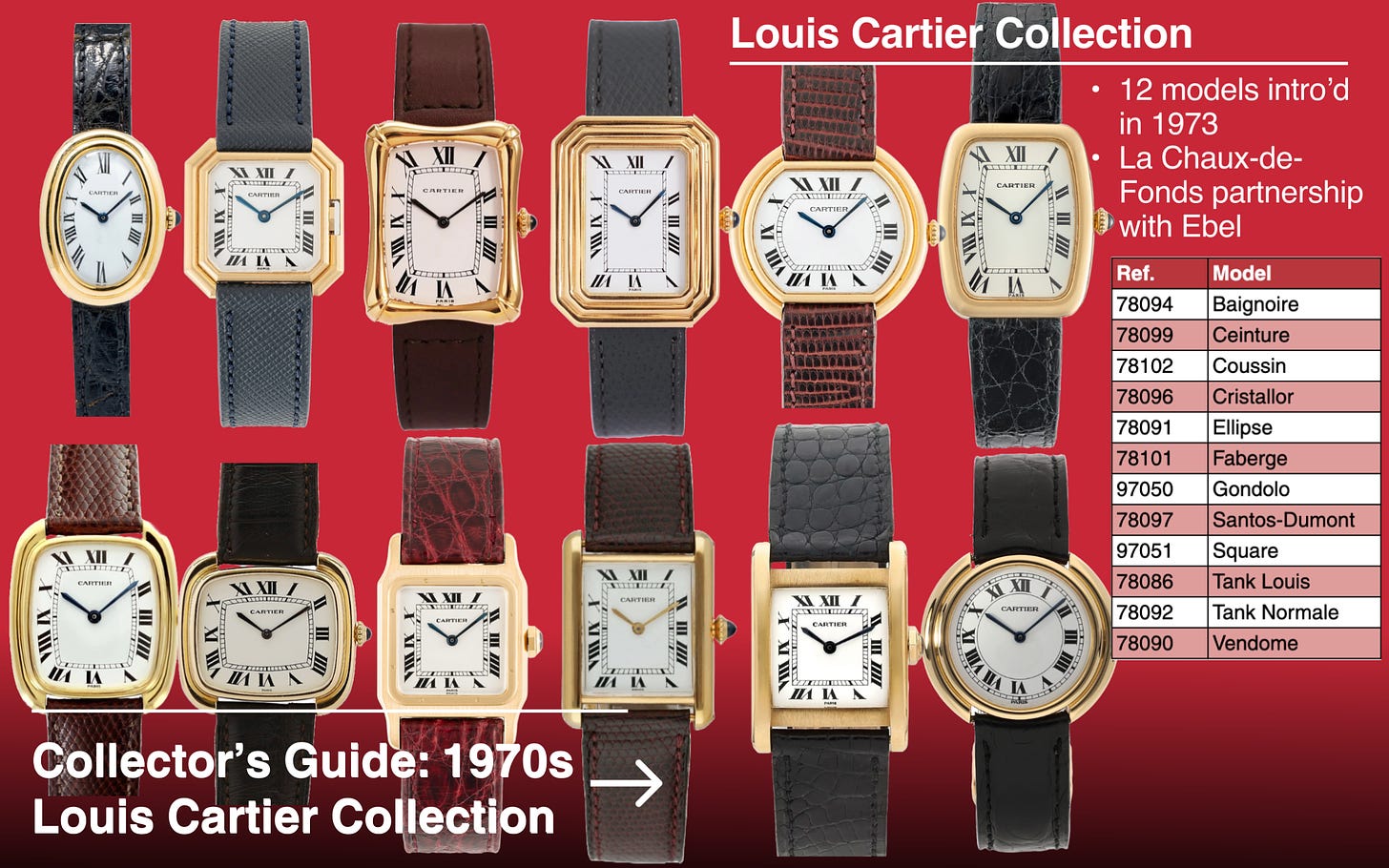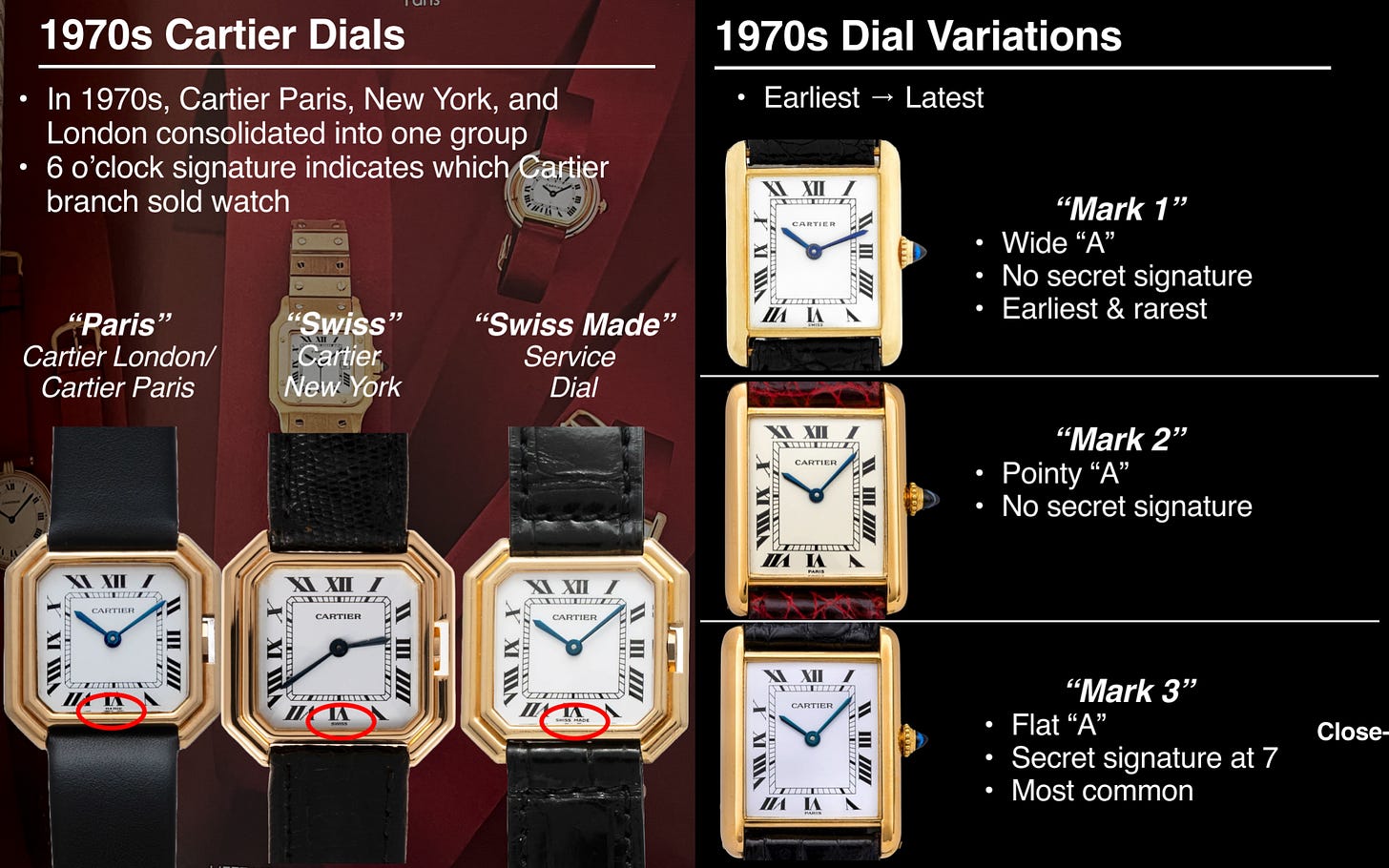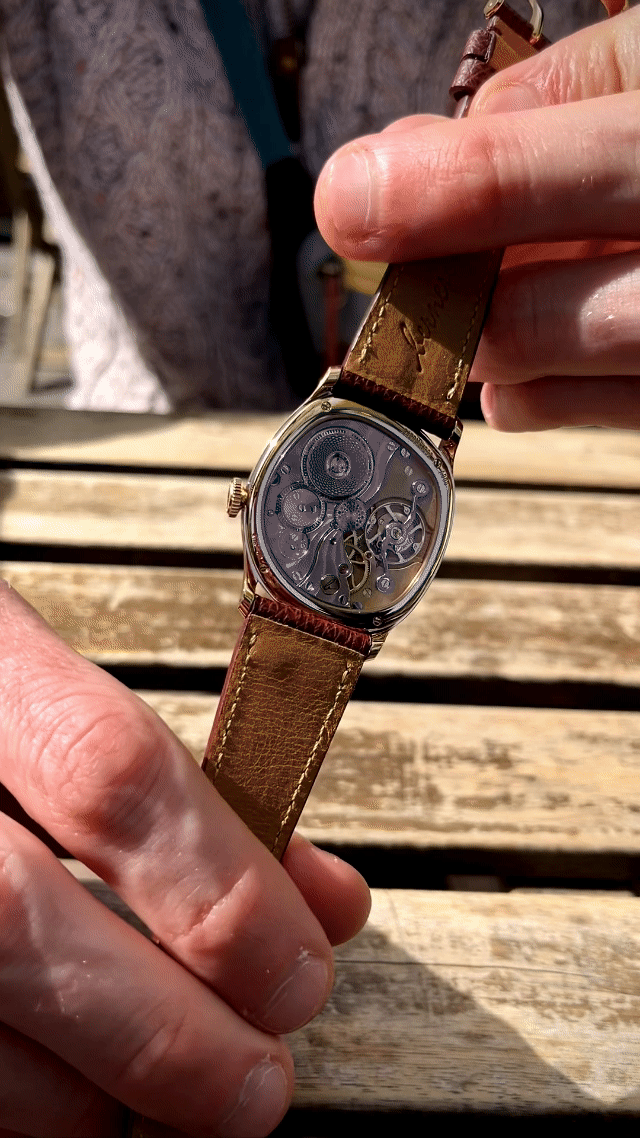May Update: Do It For The (Watch) Culture
A Collector's Guide to vintage Cartier, an important Rolex lawsuit, and a deep dive on Hermes.
Welcome to my monthly update, and sorry for taking last month off. If you want me to keep doing these please give that heart above a tap. My Hodinkee highlights below, but first:
There was one line of conventional wisdom from Watches & Wonders that, the more I thought about it, the less it made sense.
It went something like this: Sure, the releases felt a little boring, but the market has slowed down and we don’t know if or even when it might pick back up, so it makes sense that brands wouldn’t release anything big.
Rolex’s CEO even gave a rare interview warning of a slow 2024. And perhaps this wisdom holds for a brand like Rolex (or Patek), but for almost every other, I’m not sure it does. Playing it safe when times are tough seems like a pretty good way to guarantee no one really pays attention.
But if you’re not weighed down by years of history or layers of bureaucracy, it seems like a great time to experiment and take risks – necessary, even.1
Luckily, the farther you went from the main fair, the less this conventional wisdom seemed to hold. I was excited by a lot of what’s to come from the smaller brands at satellite shows. That said, a lot of new brands continue to pop up. Not all will survive, which is fine. But buoyed by the broader interest in more types of watches – it’s far from just vintage Rolex and sports watches nowadays2 – this next generation of brands seems pretty experimental, which is exciting.
This is also why the best watch I saw that week, that Berneron Mirage, came when I met Sylvain over a beer at some random cafe adjoining a park, far away from the fluorescent lights and financial constrictions of Watches & Wonders.
Sometimes you have to do things that seemingly make no sense in the short term, betting that your risk will pay off in the long term.
Of course, media is no different. Publications in other industries are getting dropped like Drake in his latest beef, and that’s before we get to the fact that AI might obliterate everything, or at least fundamentally change the way we use the internet.3
One simple Thread I’ve thought about perhaps more than any other comes from the Editor-in-Chief of The Verge, which manages to be one of the few sites I still visit regularly. Speaking just after the “death” of Sports Illustrated and Pitchfork, in part:
“Another reason we’re mourning these magazines is because the media that has replaced them is clout chasing algorithmic garbage, not anything that has aspirations of being bigger than whatever metrics a platform gives them.”
This feels a little harsh towards (some) newer media, but the point remains. There are more content creators than ever before in watches, but they’re scattered and discovery is difficult. It also feels like there’s less original content than before,4 with everyone kind of trying to make the stuff that each platform “wants” it to make – “the medium is the message,” as the saying goes.5
At their best, old publications like SI aspired to be bigger than metrics – to properly document the culture of whatever they were covering. And this didn’t always make sense. The same can be said of watches, and I hope we continue to figure out ways to achieve this same level of aspiration and not just cover what I’ll refer to as the “PR agenda,” but instead continue to document the aspects of watch culture that are actually interesting.
Articles of the Month
Outside of new watches at Watches & Wonders, the biggest article I wrote in April was my Collector’s Guide to 1970s Cartier:

💾 To bookmark:
A Collector’s Guide To 1970s Cartier
1972 was a pivotal year for Cartier. First, a group of investors acquired Cartier Paris, soon also acquiring New York and London, consolidating the 3 branches after they’d been split up following Pierre Cartier’s death.
Cartier also began a partnership with Ebel to move watch production to La Chaux-de-Fonds. Before then, Cartier watches had been produced in Paris (or London) in small numbers.
Buoyed by its new partnership with Ebel, Cartier did something ambitious in 1973, releasing the Louis Cartier Collection, its first true historical collection of 12 watches that brought designs from Cartier’s golden years into serial production.
This Collector’s Guide was my effort to begin documenting models, dial types, and more. I’ve been happy with the reception it’s received and perhaps you’ll find it helpful in a future hunt for a vintage Cartier.

🤓 To analyze:
Swiss High Court Rules On Lawsuit Between Rolex And Customizer Artisans de Geneve
Honestly, I thought this might’ve been a story that larger publications picked up: In a precedent-setting case, Switzerland's high court ruled that Artisans de Geneve can personalize watches at the request and on behalf of the watch's owner and only for their personal – not commercial – use.
It's the first time the Swiss Supreme Court has considered this issue of personalization and customization, and it could have long-term effects on Rolex, AdG, and the watch industry (and other industries) more broadly.
It affirms something that probably feels intuitive to watch enthusiasts: You can do whatever you want with your own watch, as long as it remains for your personal use. You can even hire a third party to do this customization or modding.
After all, there's a long history of customizing, modding, and bussing-down watches. It's personal and fun, and no brand should be able to control that. At the same time, brands have some legitimate interest in protecting their brand name. Balancing these two interests is tricky, and while the fight is between Rolex and AdG for now, it has big implications for the future of watches.
It also raises bigger questions about who can customize, so I dusted off the old barrister’s wig to analyze the decision.
🎧 To listen:
I know a lot of people enjoyed the Acquired episode on LVMH I linked at the end of 2023, so perhaps you already caught their episode about Hermes. Another great study of the business of luxury.
Over in Hodinkee land I’m still doing Hodinkee Radio every week, and my favorite episode of late was my interview with Jonathan Ferrer of Brew Watches.
That’s all for May. Thanks as always, for reading, and please like and share. See you again next month.
-Tony
P.S.
But please don’t sleep on vintage Rolex! I truly think in-depth articles like Charlie’s on the 5512 help renew interest.
Yes, I’m guilty of this too.
Not for nothing, this is not meant in any way as an attack on new-age creators. I’m friendly with some and many do great work. In fact, I think there’s this tendency for the “old guard” to attack and discredit the “new wave” (and vice versa), which has the net effect of decreasing trust and interest in media overall.






I also didn’t get the Hodinkee radio idea (which you nodded politely along to) that the best thing for Rolex and the industry in general would be to do nothing and let things settle down. Why would you let interest continue to sag when it’s already sagging - makes no sense at all. It would be the best time for a brand to take things by the throat and release something great, and probably at a lower price point (Doxa 200T smashed it in that regard).
wow, tony, what an awesome newsletter!